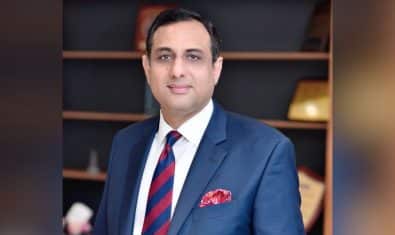The Securities and Exchange Commission of Pakistan (SECP) says that complex legal structures may be used to hide the ‘ultimate beneficial ownership’ by splitting shareholdings below the prescribed control level thresholds, which is (10%).
According to a report by a local newspaper, SECP disclosed that Asset Management Companies & Collective Investment Schemes (AMCs & CISs) are at medium-high risk of money laundering. The presentation noted that 98% of the active customer accounts in the asset management sector belong to individuals/natural persons.
Politically exposed persons (PEPs) and their close associates, high net worth individuals, foreign and non-resident customers, and NPOs/charitable organizations are more vulnerable if they are not identified through the Know Your Customer or Customer Due Diligence (KYC/CDD) process.
The report added that all the payments/receipts in this sector are made through banking channels, stolen money could be routed through the banking channels for investment/placement in the fund/wealth management sector for the purpose of money laundering (ML).
The products and services offered by the fund/wealth management sector include investment/deposit as well the feature of easy entry and exit at any time, said the SECP. This makes the sector attractive for Money Laundering/Terrorist Financing and therefore is assessed at a level of medium-high vulnerability.
Securities Market
According to the Presentation by the SECP, there are only four active products currently offered in the securities market sector: Ready Market, Deliverable Futures Contract, Margin Trading System and Margin Financing. Equity market products could be used to layer or integrate the proceeds of crime, or to transfer value to terrorists, and are therefore vulnerable to money laundering activities.
The securities sector is inherently vulnerable to Money Laundering/Terrorist Financing from the 1,562 identified politically exposed persons (PEPs). Since almost all the payments/receipts in this sector are made through the banking channels, the money can be routed through banking channels for investment/placement in the securities sector. There are 5,134 high net worth customers investing in the securities sector.
These customers may have generated their wealth from multiple sources and regulated persons may not have enough information to identify and verify all sources of funds. It is unknown how much money is invested in Pakistani capital markets by these non-residents.
However, due to the significant possibility that large amounts of Pakistani criminal proceeds are laundered abroad, it also seems likely that final integration could occur by bringing back such proceeds and investing them in Pakistani assets, including through capital markets, the SECP said.
Geographically, 99 percent of branches of securities brokers are centered in Karachi, Islamabad, and Lahore. Further, no broker has any branch out of Pakistan.
Region-wise Distribution of Customers
Out of total active and inactive customers following is the region-wise distribution of customers i.e.
- 7,199 in KPK
- 209 in FATA,
- 75,649 in Punjab
- 109,320 in Sindh
- 1,454 in Balochistan
- 7,554 in Islamabad
- 112 in Gilgit/Baltistan
- 823 in Azad Jammu & Kashmir.
However, SECP noted that the delivery channels can increase money laundering risk in the securities market based on the use of wire transfers, online payment transactions, payment through debit/credit cards, and internet-based payment systems.


























The SBP & SECP once believed to be most honest organizations with best possible officers
I have never understood this money laundering of SECP. How much do one need to be a part of this investment?